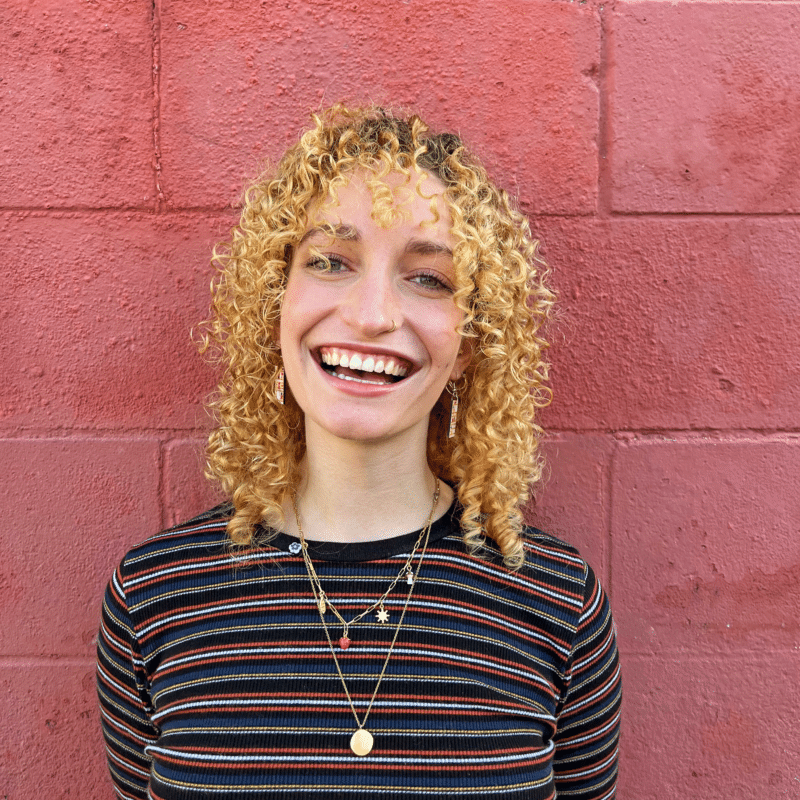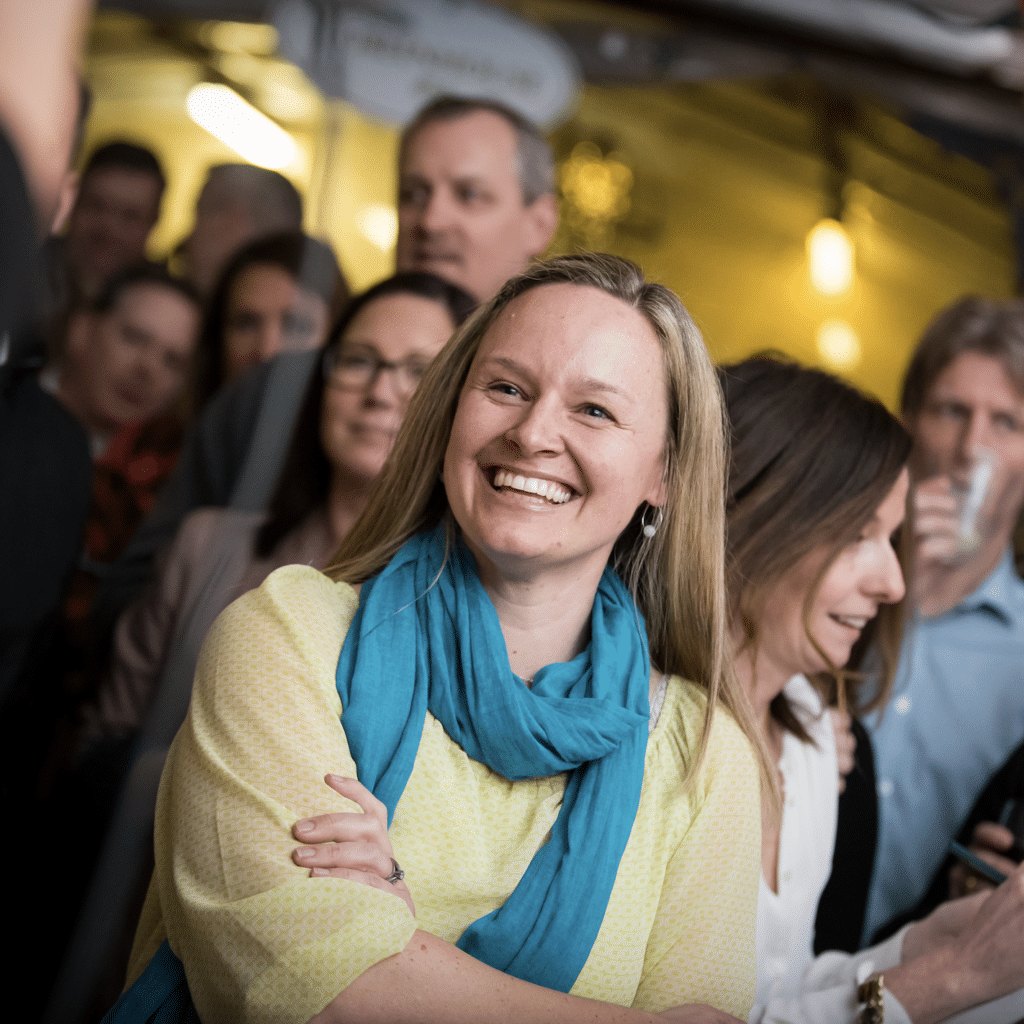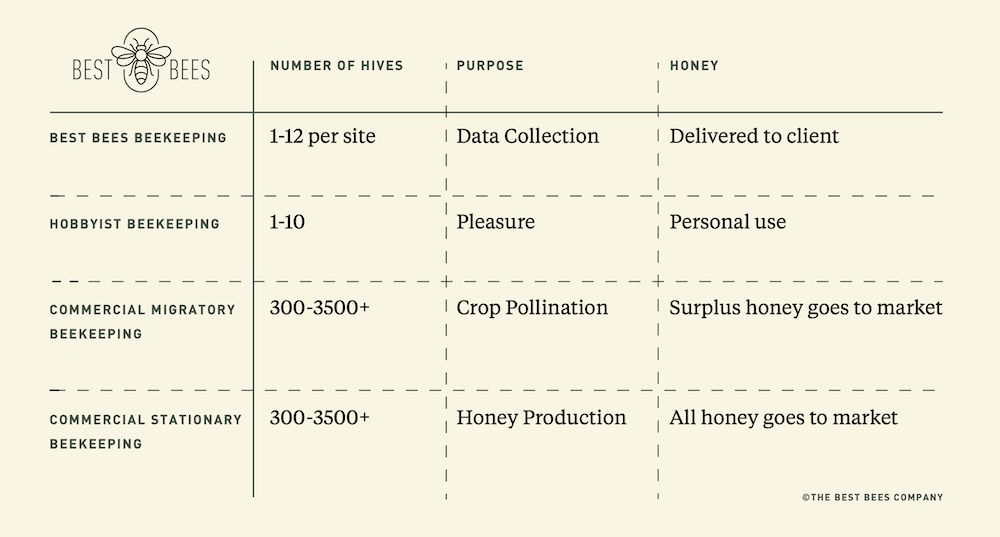Contents:
- What is the Urban Bee Lab (UBL)?
- The Origin Story of the Urban Bee Lab
- Past UBL Projects
- Meet the Current UBL Director, Katina Bentley
- What Kat and the UBL Have Been Doing Lately
- Recent Research Paper in Publication Process
- FAQs
What is the Urban Bee Lab?
The Urban Bee Lab (UBL) is Best Bees’ affiliated 501(c)(3) nonprofit organization dedicated to pollinator health research, education, and advocacy.
Best Bees’ beehive data is collected in our proprietary software system, Bzzz, and then shared with the UBL. The UBL shares that data and subsequent research in creative ways with the general public and scientific community, fostering an environment of open-access to knowledge and information.
The UBL aims to engage students, community members, landowners, and policymakers in pollinator education and advocacy. It also partners with scientific and research institutions to conduct cutting-edge research into pollinator health and habitat.
The Origin Story of the Urban Bee Lab
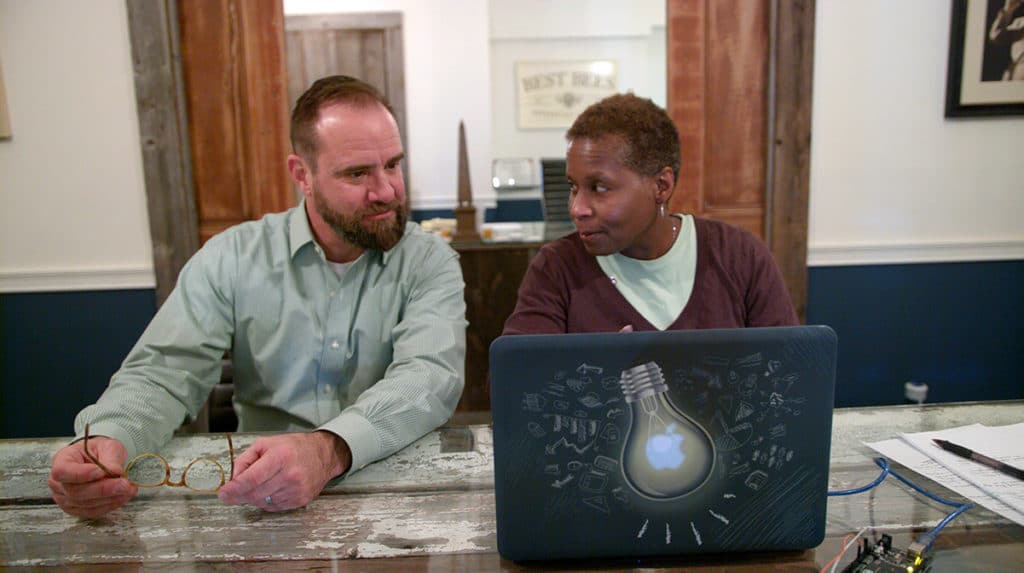
Since day one back in 2010, our proceeds from The Best Bees Company’s beekeeping services have gone to fund our research to improve bee health.
In 2013, a client came to meet with our CEO, Noah Wilson-Rich, to learn more about our research. She wanted to donate to fund further programming efforts. This interest inspired us to found a nonprofit, and so in 2014, the Urban Bee Lab was born.
We quickly realized that UBL and Best Bees complimented each other’s missions and efforts in what we call a flywheel approach — where the progress of one organization feeds into the growth of the other.
The intention of Best Bees’ research is to modify best practices for what anyone can do to better improve pollinator health, from individual citizens, businesses and corporations, to the city, state, and federal government. We continuously learn from our research results and tweak Best Bees’ practices for beekeeping to reflect our most updated findings.
The improved practices lead to new data sets that are then passed to UBL for more creative analysis, reporting, and continuously updated impact.
Past UBL Projects

SYNTHETIC APIARY
Funded by the 2020 Tokyo Olympics construction team, Best Bees and the UBL worked with the MIT Media Lab on a project called Synthetic Apiary. We rented out a large warehouse to simulate an eternal springtime environment for bees.
Neri Oxman and her team at the Mediated Matter lab combined their experiments on 3D glass printing with Best Bees research beehives to design a living architecture. The goal was a pavilion made of 3D printed glass, with living bees thriving on the inside and producing honey that could be collected from the walls by visitors to the Olympics.
This edible architecture was to be not only an awe-inspiring experience for visitors, but also truly sustainable. The glass could be melted down afterwards for absolutely zero footprint left behind.
Unfortunately, the bees hated it in the warehouse, so we called the project off. As scientists working with living creatures, we have to be in tune with when to draw the line for the sake of the wellbeing of the bees.
The UBL filed a patent for the work, and also the project was featured as part of Neri’s retrospective at the Museum of Modern Art across New York and San Francisco in 2022.
NASA DEVELOP: POLLINATOR BLUE ZONES
In 2018, we worked with NASA in a program for nonprofits with data analysis, called NASA Develop. A large part of the research done at NASA is Earth science research. NASA has a network of satellites that collect images and also capture metrics invisible to the naked eye, such as thermal radiation, precipitation, infrared and other non-visible light sources.
Leveraging Best Bees data, NASA Earth observations, and nationally reported statistics, a comprehensive methodology was developed to illuminate environmental variables that are linked to honey bee prosperity in the New England region of the United States from 2015 to 2018. We used the concept of blue zones — areas where humans live longer than average — applied to pollinator health as a guiding force for this project. It was an incredible opportunity for Best Bees’ data to expand its impact, and it couldn’t have happened without the UBL.
Then, for only the third time in human history, we sent bees into space, with MIT and the Blue Origins rocket company, with a little help from our friends at the USDA who shared with us their very special line of hardy queen bees.
Sending bees to space was something that would not have been possible for Best Bees as a for-profit company alone. Some opportunities require partnerships between academia, nonprofits, and for profits together.
HONEYDNA MAPPING
HoneyDNA is the process of identifying the exact percentage of various mounts of pollen species found in honey through advanced genomic sequencing. The UBL is taking data collected from Best Bees honey samples and mapping the results on a global scale.
Mapping HoneyDNA aims to reveal geographic areas where bees proper based on the diversity of their diet. Consequently, the map will identify “pollinator food deserts,” or areas where plant forage is sparse or monocrop culture is prevalent.
Additionally, by identifying the presence of invasive species in certain locations before and after extreme weather events, HoneyDNA can inform us on how to revive our land in a sustainable way that prioritizes native and diverse plant life.
Meet the Current UBL Director, Katina Bentley
Katina Bentley (Kat) is an accomplished marketing and nonprofit professional with a diverse portfolio career, dedicated to fostering relationships and community. She is passionate about innovation and committed to causes including the environment, education, and social justice.
Her unique background brings strength in storytelling, design, program management, event planning, and partnerships, adding significant value to projects and initiatives.
One of her favorite projects prior to joining the UBL was her role as the lead storyteller on a service trip to Malawi last summer. She shot, edited, and produced a video to help raise critical funds in support of a specific school community in Malawi.
What Kat and the UBL Have Been Doing Lately
One big undertaking has been various fundraising efforts — between applying for grants, coordinating auctions and giveaways, and organizing events, the UBL’s schedule has been packed!
Kat and the UBL have also started several exciting projects and initiatives. In September of 2023, the UBL Foundation provided funding for the development of a flowering architectural research project by Dr. Rafael Luna, who will investigate the use of “bee bricks” and a tower of flowering lavender as a shared urban habitat for humans and bees.
One of the UBL’s main goals is to promote pollinator education. In this vein, the UBL, with funding from Grow Boston, has put together a free online classroom toolkit which encourages students to become citizen scientists.
As part of the mission to share our research in creative ways, the UBL has also started projects to bring in students to work with our data to support their involvement in science and environmental advocacy. Pitch for Pollinators, the UBL’s biggest initiative to date, was started back in fall of 2023. It consisted of a partnership with John D. O’Bryant School of Math & Science in Boston, wherein two classes of students were given access to Best Bees Bzzz data and HoneyDNA sample data to use in their science fair presentations.
The students presented their projects in February, 2024, and 1 winner was selected from each of the four following categories: science, math, art, and engineering. Each winner was awarded $1k; funding to do this project came from the Ocean Spray Fund and Hamilton Charitable.
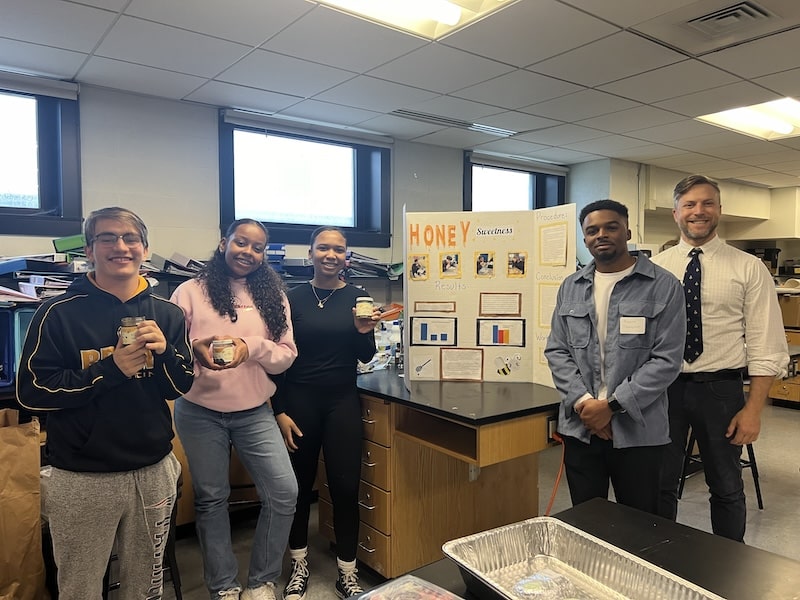
The success of this initiative inspired the formation of a new initiative: Apiary Academics. This initiative is starting at an elementary school in Boston — the Bridge Boston School — thanks to a generous donation from a donor. The school has Best Bees beehives on site, and the UBL will be conducting three teaching sessions with the students so they can get hands-on experience and connect with the bees and pollinator research.
Best Bees employees donate their time to volunteer for various UBL events and programs. It’s part of the interconnected nature between UBL and Best Bees, and it’s mutually beneficial. Best Bees, as a company, is able to give back to our community and act on our values.
Recent Research Paper in Publication Process
Aside from community outreach and education programming, the UBL also partners with other institutions to conduct research projects. The work with NASA Develop was one such research project; a new one is currently in the final stages of publication at a peer-reviewed academic journal.
This project was conducted by Katie Culbert, a high school senior who served as UBL’s summer intern through a program at MIT. Katie looked at our data on bee health and our national network of hives to understand where bees are thriving and why.
Katie expanded on our internal concept of blue zones for pollinator health. Blue zones are geographic areas where humans are long-lived — we took that concept and applied it to bees when we were working with NASA Develop. We had a parallel concept of red zones, where bee health is quite poor geographically.
Katie pointed out that we missed the middle, so she added a new perspective by incorporating yellow zones. She analyzed our HoneyDNA samples, where Best Bees takes a deep dive into the forensic science within our network of research beehives to identify the eDNA present in honey.
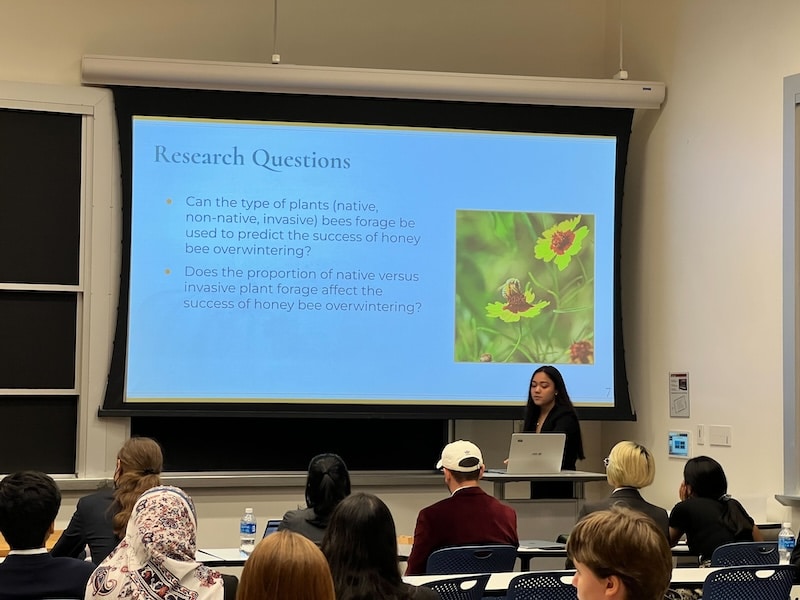
Katie used HoneyDNA to test the habitat hypothesis, which explains bee health as a function of plant biodiversity. She found statistically significant differences between healthy bees and not healthy bees in areas with more significant amounts of native plant populations.
She also looked into what allows native plants to thrive in a modern world. She looked at our HoneyDNA samples from Best Bees beehives before and after natural disasters, such as Hurricane Maria in Puerto Rico and wildfires in northern California, and found that native plant populations bounced back first. This may point to natural disasters being nature’s way to almost reset the ecosystem.
As a whole, Katie’s project has the potential to flip our attitudes around climate change, from hopelessness to pragmatic curiosity into how we can take advantage of the changing climate.
We can choose to take action now by promoting and planting native plants in advance of those natural disasters, so that their populations are strong enough to be there when regrowth is most urgent and needed.
FAQs
Q: How can I support the UBL?
A: Support comes in many forms — whether it is a financial contribution, volunteering with a specific skill set to help us leverage our data sets, or making introductions to build our community. It’s also really great to engage with the UBL on social media!
Q: What is the UBL’s social media?
A: The UBL is on Instagram as @UrbanBeeLab
Q: Are contributions to the UBL tax deductible?
A: Yes; as a registered non profit, all contributions are tax deductible. The UBL is ready to accept personal checks, online donations, employer matches, grant funding, donor advised funding and more.



